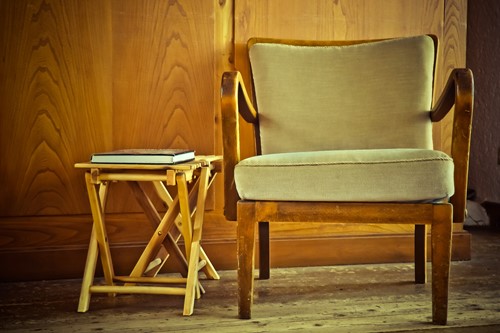
Many interior design styles call for furnishings that are vintage or well-worn. Apart from style, secondhand decor and furniture can be an inexpensive and practical alternative to purchasing brand new items. Regardless of whether you’re looking for the perfect piece for looks or for function, we’ve put together some tips for how to find and use secondhand decor in your space.
Where to Buy Secondhand Decor
There are many choices for sources of used furniture and decor. That might make it seem more complicated than simply going to a large furniture retailer either in person or online, but once you know the basics to look out for you’ll feel like an expert. Here are the most common ways to find secondhand furnishings:
Thrift Stores - Thrift stores are constantly receiving donated furnishings from people who no longer need them. Because of the high volume of new items, you can check stores frequently and usually discover something new each time.
Consignment Shops - Consignment shops differ from thrift stores in that the original owner gets some of the profit from the sale. This also means there is a more strict vetting process for accepting which items to sell. Consignment furniture is often more expensive, but you can trust that what you buy is a higher quality.
Yard Sales - No two yard sales are alike, which makes them an exciting albeit unpredictable way to shop. There is no telling the sort of quality or selection of furniture you’ll find for sale on somebody’s front lawn, but sometimes you can find great deals and hidden treasure.
Estate Sales - Estate sales are like yard sales but have far more to choose from, as everything in the home is for sale. Everything from furniture to lamps, art, houseplants and collectables are up for grabs. Estate sales can also be easier to find than yard sales because they typically advertise more extensively, so check online as well as around the neighborhood.
How to Choose the Perfect Piece
Now that you know where to look, the question becomes how to choose what will work best for your space. Here are some general shopping strategies to consider:
Start With What You Need - Whether you’re in a thrift store or at an estate sale, you might feel overwhelmed with choices. When you’re surrounded by amazing deals on quality items it’s important to stick to your budget and not end up with clutter that will eventually end up in your own donation pile. To stay focused, make a list of the items you need most and make those your priority. Resist the temptation to buy additional items until you have your needs met.
Follow a Color Scheme - Think about the colors in the room you are decorating when looking for secondhand items. Unlike a retailer with brand-new furnishings, you won’t likely have the choice of colors or finishes on every piece you buy. Stick to what will work with your chosen color palette and you’ll be able to achieve an eclectic mismatch aesthetic without making your room look random and busy.
Inspect Every Detail - Quality is key, so it’s crucial to examine every piece for signs of irreparable damage. Some damage adds character—after all, a weathered look is one reason secondhand items are popular design choices. If you find damage that would be impossible or expensive to repair, skip it. Make sure seating can safely hold your weight and that legs on tables don’t wobble. You can fix some minor issues with DIY, but consider whether it’s worth it compared to finding another item all together.
Now that you have the basics, you should be able to search for secondhand decor with confidence and ease. Be patient and open-minded and you’ll find the best possible furnishings for your space.
About the Author

Debbie Caldwell
When you first meet Debbie Harris-Caldwell, you are immediately drawn to her charming Welsh accent and the twinkle in her eye. The well-traveled transplant from Wales is quick to set you at ease and time spent with her promises to be time well spent.
Debbie has been a real estate agent for 40 years and takes great pride in her customer service skills. "I make myself available to my customers when they need me, whether it's on a Sunday Evening or after their long day at work. I make my schedule fit theirs. I also keep my customers updated on everything happening with their listings or purchase, I am their conduit for information." She has built a business following her key principles of clear communication, attention to detail, client advocacy, and comprehensive knowledge of the area. Debbie comes to every new transaction with positive energy, determination, a strong understanding of the currents driving the market, and the expertise that comes from a lifetime of experience. She knows the importance of marketing and whether a home is for sale for $200,000 or for $2 million, she always has professional photography done and creates a listing presentation that best shows off her customer's home.